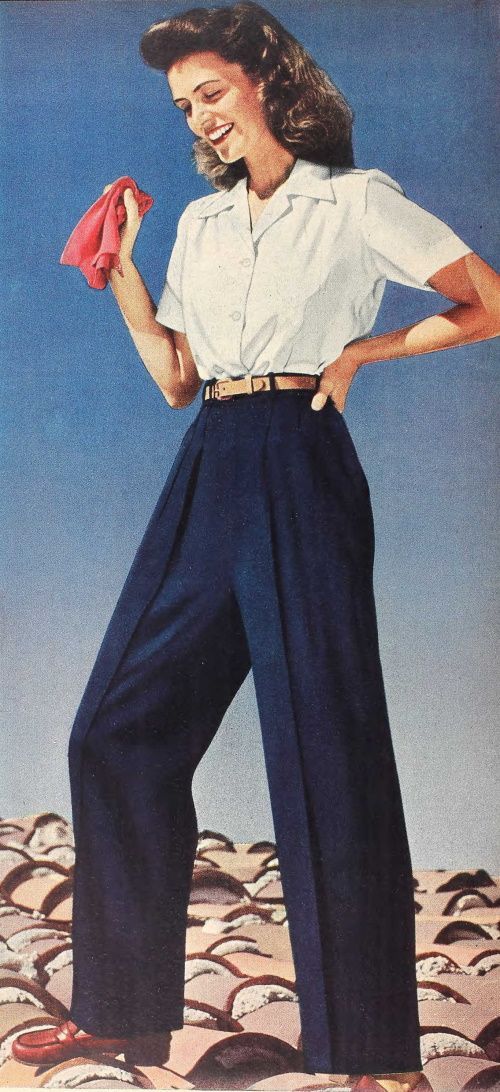The Evolution of Women’s Pants: From Taboo to Fashion Staple
Before the 1940s, women simply did not wear pants as a normal part of their wardrobe. 1930s women’s loungewear included Beach Pajamas, overalls, culottes and sailor pants, but these were only acceptable for at home, sport or vacationing activities. Going into the 1940s, loungewear and workwear blended together to create the first decade of women wearing pants as a common fashion choice.
## The 1940s: The Rise of Women’s Pants
During World War II, women began taking on traditionally male jobs in factories and other industries, and this marked a turning point for women’s fashion. Women needed practical, durable clothing for their new roles, and pants became a necessity. As a result, fashion designers started creating more tailored, feminine pantsuits and trousers for women to wear in the workplace.
## The 1950s: Hollywood Influence
In the 1950s, Hollywood stars like Katharine Hepburn and Marlene Dietrich popularized women’s pants by wearing them in their films and on the red carpet. This led to a shift in societal attitudes towards women wearing pants, and it became more socially acceptable for women to incorporate them into their everyday wardrobes.
## The 1960s and 1970s: The Pantsuit
The 1960s and 1970s saw the rise of the pantsuit, a versatile and stylish option for women in the workplace. Designers like Yves Saint Laurent and Coco Chanel created elegant and sophisticated pantsuits that allowed women to exude confidence and professionalism. Women’s pants became a symbol of empowerment and liberation during this time.
## The 1980s: Casual Chic
In the 1980s, women’s pants continued to evolve, with the introduction of casual styles like jeans, leggings, and tracksuits. This decade saw a shift towards more relaxed and comfortable clothing, and women embraced pants as a staple in their everyday wardrobes. The popularity of designer denim and athleisure wear further cemented the place of pants in women’s fashion.
## The 1990s and 2000s: Diversity in Style
The 1990s and 2000s saw a proliferation of diverse styles and cuts of women’s pants, from low-rise bootcut jeans to high-waisted wide-leg trousers. Fashion became more inclusive, with women of all body types and sizes having access to a wide range of pant options. The rise of fast fashion and online shopping also made it easier for women to experiment with different pant styles.
## The Modern Era: A Wardrobe Essential
Today, women’s pants are a wardrobe essential, offering endless possibilities for self-expression and style. From sleek tailored trousers to cozy joggers, there is a pant style for every occasion. Women can effortlessly transition from work to weekend in a pair of well-fitted pants, showcasing how far women’s fashion has come since the days when wearing pants was considered taboo.
In conclusion, the evolution of women’s pants from the 1940s to the present day has been a testament to the changing attitudes towards women’s fashion and empowerment. From wartime necessity to Hollywood glamour to everyday wear, women’s pants have come a long way and are now an indispensable part of every woman’s wardrobe.
## Summary:
– 1940s: Women wear pants for practical workwear during World War II.
– 1950s: Hollywood stars popularize women’s pants, leading to social acceptance.
– 1960s and 1970s: The rise of the elegant and professional pantsuit.
– 1980s: Introduction of casual styles like jeans and tracksuits.
– 1990s and 2000s: Diversity in styles and inclusive fashion for all body types.
– Modern era: Women’s pants are a versatile and essential part of every woman’s wardrobe.
You can review our digital products by following us on Etsy.





